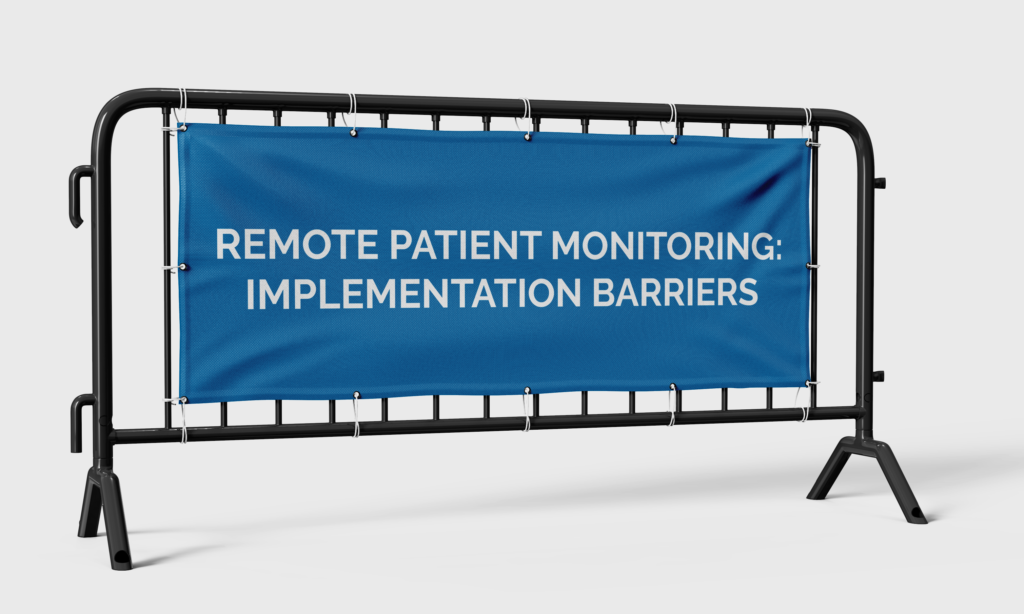Even before the pandemic, Remote Patient Monitoring (RPM) has been in use but scantily and limited only to patients with complications, poor disease management, and difficulty seeing a doctor frequently. When COVID-19 hit the world, RPM usage dramatically increased with Congress approving the emergency authorization for providers to use the tool.
RPM has enabled physicians to keep track of their patient’s health status during the public health emergency. With timely patient data transmitted to a clinician for review, physicians can adjust the treatment plan and medications when needed to prevent an escalation or hospitalization.
With a variety of wearables and at-home devices in the market, RPM is poised to be the future of healthcare, a long leap from its humble beginnings. Yet physicians find themselves facing barriers to fully implementing RPM and benefiting from its solution as well as capitalizing on Medicare’s incentives for all non-face-to-face services.
What are these barriers to RPM implementation?
For many providers, the mere thought of setting up a new program is met with hesitation and uncertainties because of several factors to consider.
1. Upfront costs in obtaining the devices.
Practices need to purchase, store and ship the RPM devices to the patients. Other than cost, they would need a physical space to store the equipment as well as arrange a courier to transport the devices to the patient’s homes.
2. Organizational costs in learning a new system.
The practice will also need to spend on training its staff on the proper use of the RPM technology that will be used. This means adding capabilities to effectively run the program, document it, and prepare the billing charges so the practice can participate in Medicare’s reimbursement program.
3. Addressing challenges on patient buy-in
Practices will need to invest a lot of time and effort in educating patients as to the value of RPM and how they can benefit from the service. Many patients may be reluctant to use the devices because they think the technology is lacking in the human touch, seem too complicated to use, and find it invading their privacy. What they need to understand is that RPM can prevent them from escalating, taking an unplanned ER visit, and getting hospitalized.
4. Additional administrative burdens.
There will surely be new processes to learn and establish, including handling transmitted patient data, identifying who will monitor them, and recognizing when a physician needs to be called in. Without a dedicated team to handle the RPM program, there will be significant disruptions to the practice routines, thereby burdening the providers and their staff with additional work.
A look into RPM usage during the pandemic
A study recently published in Health Affairs looked into RPM billing for patients with chronic conditions during the pandemic. A fourfold increase was mostly seen by a small fraction of primary care providers caring for patients with chronic conditions, many of whom suffer from hypertension and diabetes. The study has also revealed that these providers used untargeted methods, hardly revealing any evidence that the RPM was used for those that have poor disease control.
The researchers reviewed deidentified claims data from January 2019 to March 2021 to monitor usage and targeting. These data followed the number of claims, persistence, type of providers, and use rate by patients cared for by providers with a high volume of patients. The findings revealed that primary care physicians have used the “shotgun approach” in using RPM for there is only a small difference in the overall claims made by patients with uncomplicated conditions from those with complicated ones. In the same manner, there is no marked difference in the usage by those with poor disease management from those with good disease control.
Study findings on the use rate of patients:
- Patients with one chronic condition had a 16.5% use rate while those with 5 or more chronic illnesses had a 24.1% use rate.
- Patients with non-complex hypertension had a 21.7% use rate compared with 23.8% for those with complex hypertension.
- Patients with relatively good diabetes control had a 22.1% use rate while those with poor diabetes control had 21.9%.
The study also revealed clustered usage of RPM as can be seen by the general RPM claims within the period of early expansion and high concentration among providers:
- Only 0.75% had any general RPM claims with only 0.1% of that group making up the 69% of all general RPM claims.
- The top 0.1% of primary care providers for outpatient telemedicine claim volume make up for 6.1% of telemedicine claims.
The low numbers can be attributed to the above mentioned barriers, foremost of which is the cost since RPM requires a significant capital investment according to Mitchell Tang who co-authored the study.
How RPM benefits physicians
Though the study revealed only a small number of PCPs are using RPM, the tool remains an innovative care delivery that can improve patient care. Taking for instance a patient with diabetes using an RPM glucometer. The data can help providers make important clinical decisions regarding the trajectory of care, and whether or not it requires adjustments. It could also improve patient engagement with patients taking in the daily readings and constantly being informed as to their progress. More importantly, the captured data can detect the onset of a problem and prevent it from becoming a major complication.



